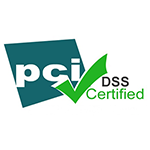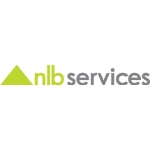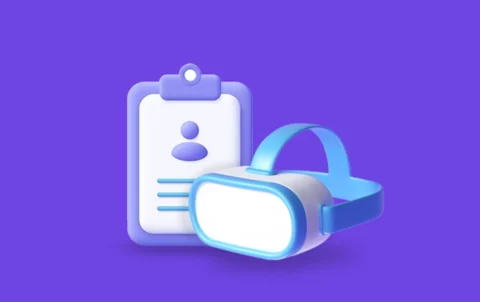© 2025 Next Level Business Services Inc. All Rights Reserved.
The Complete Remote Onboarding Checklist For Virtual Employees
By NLB Services
As the need for employees working remotely rises, so does the need to prepare a checklist that will ensure proper workflow in an organization. As we all know, a remote workforce has many advantages as it gives flexibility, reduces costs for both management and employees, and most importantly — it is high in demand and helps greatly to retain talent. But remote onboarding could be a handful if you are inexperienced in conducting onboarding processes.
There are many moving pieces in figuring out what works best for the organization and what does not. It can be a little difficult to check on all the essential steps in onboarding new hires remotely, and it can be overwhelming to figure out where to start.
What is Remote Employee Onboarding?
Employee onboarding of a candidate is a series of activities that allows new hires to explore the company and know more about it. It also helps them to learn about the company’s work culture, values, beliefs and hierarchy. Remote employee onboarding involves a process similar to when new hires are onboarded for a work-from-office profile. From an employee’s perspective, onboarding is the opportunity to get used to a new environment. It is a valuable time for an employer to share all of the elements and information that will help the new team member to become successful as they join the company. Onboarding processes can be formal or informal and companies use both approaches to find the new teammate and arm them for the job. Formal onboarding mostly includes a series of workshops, training sessions, video calls and exercises.
Why is Remote Onboarding Challenging?
While remote work sounds excellent and easy, remote onboarding requires some planning. You can still set up the new hires to succeed while working from home. The most common challenges that you might face during a remote hire are:
- a) The remote worker can feel isolated – When there is no physical meeting with colleagues, it becomes too tiresome for a remote worker to feel like working.
- b) New employees find it difficult to speak with colleagues – HR should create a virtual channel for new employees to communicate with the team.
Best Practices for Onboarding Remote Employees
Remote onboarding is the process of welcoming new hires to the company virtually. It is similar to the regular onboarding process, except everything is done virtually and not face-to-face. Sometimes it becomes challenging for those who have a weak internet connection, but remote onboarding can still make new hires feel welcome and prepare them for success.
- Start early
Try sending some videos or photographs depicting the company’s culture to the new hire. Set up a meeting with their mentor or manager for further communication. Please direct them to social media handles and tell them to talk about the welcome kit on platforms like LinkedIn.
- Get employees online ASAP
A remote worker is hired virtually. So, establishing a connection through Microsoft Teams, Google Meet, web chats etc. should be the first priority of a hiring manager. A lack of proper access in the digital workplace might make the new hire feel a little confused about who to speak with and which platform to use to communicate with the team member. This might make them feel disconnected from the company or team. Giving them an orientation can make the new hire feel more connected and aware of the company.
- Provide a digital employee handbook and a glimpse into the company culture
Companies need to digitize existing employee documentation and other literature that depict their culture, stories and establishment. Many companies have a website gallery section that shows the company culture. Many have embedded videos of work culture on the website and day-to-day operations activities, offering an insight into the company’s culture.
- Create a sense of belonging
A lot of new remote employees have a sense of impostor syndrome. They feel isolated from other team members. It may be because the hiring manager doesn’t ask questions or take feedback from the new hire. To combat this, the appropriate way is to establish a slack communication channel and join the new hire so that they can talk to teammates conveniently and should not feel isolated.
The company must encourage collaboration among new hires and other team members. Assigning an “orientation buddy” or any other team member to introduce them to the people in the system can help them feel seen and give them a sense of belongingness to the new firm.
- Provide an individualized remote onboarding plan with video check-ins and goals
As the new hire looks for a concrete plan about the deliverable and work, the reporting manager should create a 30/60/90 day plan with action items and goals and a timeline for each milestone and share with the teammate. The best way to execute this is via a video call with the manager and proper support from the IT team.
- Encourage collaborative learning.
When the new employee has to work in a group, a complete case study about the group project should be shared with the new hire in the beginning (during onboarding). It forges bonds between the team members and can also be a big opportunity to cross-train teammates. In the beginning, it should be within the team, and later, it can be practised in different departments.
Remote Onboarding Checklist for Virtual Employees
1. Complete Paperwork Virtually
As a hiring manager, share all essential documents before the joining date and request the new joiner to submit all required personal information such as bank details, educational certificates etc. in advance to avoid any escalations on the first day.
2. Set up an Agenda
Arrange a one-on-one meeting with the new hire to discuss job expectations, goals, and responsibilities. Take the manager on the call and understand their past work experience—Cross question about achievements made in the past.
3. Send out a Welcome Email
Send a welcome mail to the new hire on the day they join the company. The email should convey a positive tone about the remote onboarding. The welcome mail can be linked to the intranet portal, contact information, or the first-day schedule. Ensure that a self-introduction note from the new hire can be there, which can further be shared with the organization to introduce them.
4. Provide a Welcome Kit
Welcome kits are an excellent way to make the new hire feel appreciated immediately. Depending on the company’s budget, a welcome kit could have items like a company t-shirt, stickers, a diary and pen, sticky notes, mugs, headphones, a mobile phone, a personalized note from the CEO and a Bluetooth speaker. You should not be buying insanely expensive stuff only for the kit; on the other hand, you would not want to give a bad impression about the company by not giving anything to the employees. Keep a perfect balance, and welcome the new employee with a beautiful kit. A kit that they will publish/showcase flaunt on sites like LinkedIn and help to increase brand visibility.
5. Appoint a Welcome Buddy
A buddy is someone with whom the company partners the new employee during their first 2 months of employment. Their primary responsibility is to offer advice and guidance to the new joiner about the day-to-day aspects of working and encourage them about working in the company.
A welcome buddy should be good in the following traits.
- a) Communicator: They should encourage open communication and give relevant information to the new joiner.
- b) Motivated: The buddy should have a positive outlook toward work and use it to introduce the new joiner for building self-confidence and loyalty to the company.
- c) Strong Performer: The buddy should be strong enough to help the new joiner obtain knowledge about the new work environment.
6. Add Newbies to Communication Channels
Encourage open communication channels and create a separate slack channel for new hires to convey their doubts or input. Make sure to contact them regularly with check-in pointers and create an FAQ document for them to know their roles better.
7. Conduct Company Orientation
Remote onboarding is incomplete without company orientation. Start with an HR overview, followed by IT and relevant departments. It is an important step in the remote onboarding process that helps to understand the organization’s culture and other department functionalities. It is a proven opportunity for remote employees to understand the company culture and the company’s structure he/she is going to get associated with. If possible, provide a virtual tour to the new joiner; it might help them feel included. The tour can be in video format, cultural programs, photographs or slide shows.
8. Make Onboarding Interesting and Interactive
Introduce new hires to everyone in the company and relevant people working on the project they have been hired for. For remote hiring, set up video coffee chats with teammates. Informal interactions are the best. Talk about hobbies and interests and make the conversation interesting and easy for new joiners.
9. Cover Job Role and Expectations
After the company’s tour, start describing the company’s work culture and slowly come to the work deliverables. Set clear expectations at the beginning – through their managers. Managers should conduct a transparent dialogue about what the organization expects from the new joiner in terms of work.
Defining measurable KPIs can help to implement a data-driven remote onboarding process. Set clear short-term/long-term goals and onboarding processes.
10. Collect feedback
After onboarding a new remote employee, it is important to be patient and answer the questions that they might have. Many companies make a mistake by rushing through the onboarding process and forgetting to take the time to orient their new hires. As a result, the new hires can feel neglected by the management. HR professionals should be there to take their feedback during orientation programs and deliver essential information related to the management.
Conclusion
There you have it! Do include the above-mentioned action items in your remote onboarding checklist.
To begin with, you should invest in an appealing and useful welcome kit. Having all the necessary paperwork or documentation online gives ease to the candidate. At the same time, providing a list of assignments that needs to be done during the first week makes it clear in their mind about the desired deliverables out of the designated position. Ensure you make a point to use all these best practices in your remote onboarding process and delight your new hires.
Advantages of Working From HomeMetaverse BenefitsRemote WorkingVirtual SpaceVirtual WorkforceVirtual Workplace
Talent Solutions








